Overview
Have you ever wondered how businesses can really boost their aftermarket services? The article titled "10 Strategies to Enhance Your Aftermarket Services Effectively" dives into this topic, exploring different approaches that companies can take to level up their game. While we don’t have the specific details just yet, the title hints at some practical strategies that could seriously enhance customer satisfaction and streamline operations.
Imagine being able to implement ideas that not only make your customers happier but also improve your overall efficiency. Sounds great, right? This article is likely packed with industry insights and best practices that can help you achieve just that. So, if you're looking to transform your aftermarket services, keep an eye out for those actionable tips that could make a real difference!
Introduction
Hey there! Have you noticed how the aftermarket services landscape is changing faster than ever? It’s all thanks to technology and what customers expect from us. To keep up, businesses need to not only meet these expectations but also go above and beyond to ensure client satisfaction and loyalty in this competitive market.
In this article, we’ll dive into ten effective strategies that can really boost your aftermarket services. We’ll look at how innovative technologies and customer-focused practices can make a difference.
So, how can companies like yours navigate this tricky landscape and use these strategies to grow and stay ahead of the competition? Let’s find out!
GenAlpha Technologies: Streamline Aftermarket Operations with Equip360
Have you ever felt frustrated trying to find stock information while shopping for equipment? You're not alone. Equip360 is here to change that. This robust is designed specifically for manufacturers and distributors in the equipment and aftermarket services sectors. It streamlines inventory management and boosts online sales capabilities, all while significantly enhancing client experiences.
Imagine being able to manage your operations more efficiently by integrating seamlessly with your existing ERP systems. With Equip360, that's exactly what you get. Businesses can enjoy real-time insights into inventory levels, pricing, and order tracking, which means they can quickly adapt to client needs and market changes. Did you know that 38% of B2B buyers express frustration over missing stock information? This highlights just how crucial the real-time inventory insights provided by Equip360 can be.
But it doesn't stop there. A whopping 66% of B2B eCommerce businesses report that order fulfillment and tracking are their biggest challenges. Equip360 addresses these issues head-on, making it a critical tool for manufacturers in providing effective aftermarket services. As the global B2B e-commerce market is projected to soar from $26.16 trillion in 2023 to $56.92 trillion by 2028, the need for robust eCommerce solutions like Equip360 is clearer than ever.
So, as the B2B eCommerce landscape evolves, Equip360 stands out as an essential resource. Are you ready to enhance your post-sale operations and maintain a competitive edge in 2025 and beyond? Let's dive into the future of eCommerce together!
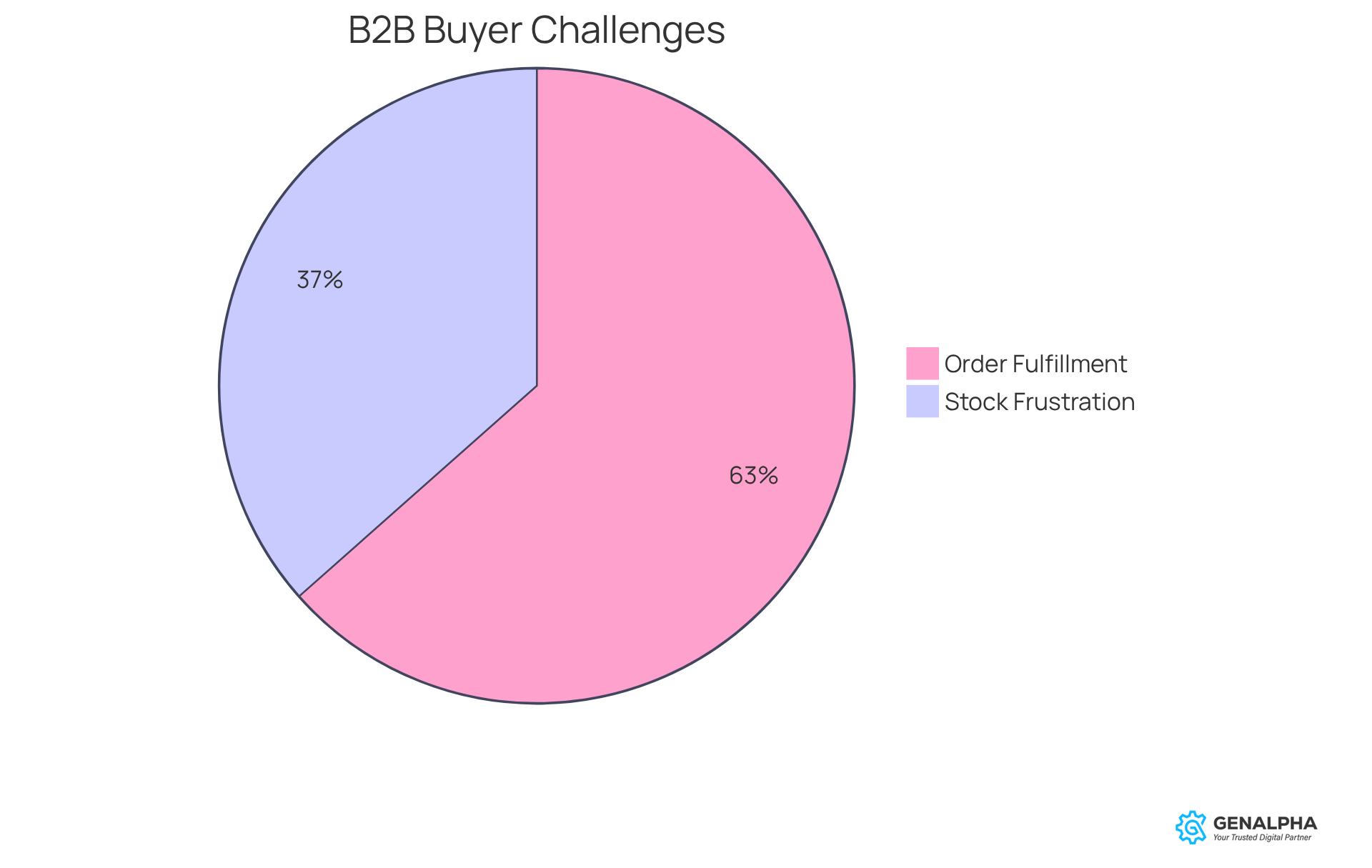
Accenture: Utilize AI and IoT to Optimize Aftermarket Services
Have you ever thought about how AI and IoT are changing the game in aftermarket services for post-sales support? It's pretty exciting! These technologies are helping companies boost their operational efficiency and keep clients happier than ever. With AI's knack for , businesses can now anticipate what clients need, tailoring their services to meet those evolving demands.
For example, a recent survey found that 60% of maintenance professionals say having access to reliable, accurate data is crucial for making predictive maintenance work. That's a big deal! Plus, IoT devices are stepping in to provide real-time monitoring of equipment performance. This means companies get critical insights that shape their maintenance strategies.
This powerful combo allows organizations to embrace predictive maintenance solutions, which can significantly cut down on equipment downtime and save on costs. In fact, the global value of predictive maintenance is forecasted to hit $60.13 billion by 2030—talk about growth!
By harnessing these advanced technologies, businesses can create a more flexible and adaptive model for aftermarket services. This not only drives growth but also enhances the overall client experience. Take Pegatron, for instance. Their automated optical inspection tool boasts a defect detection accuracy of 99.8%. That's a fantastic example of how AI and IoT can really amp up operational efficiency!
So, how can your business tap into these innovations? Let's explore the possibilities together!
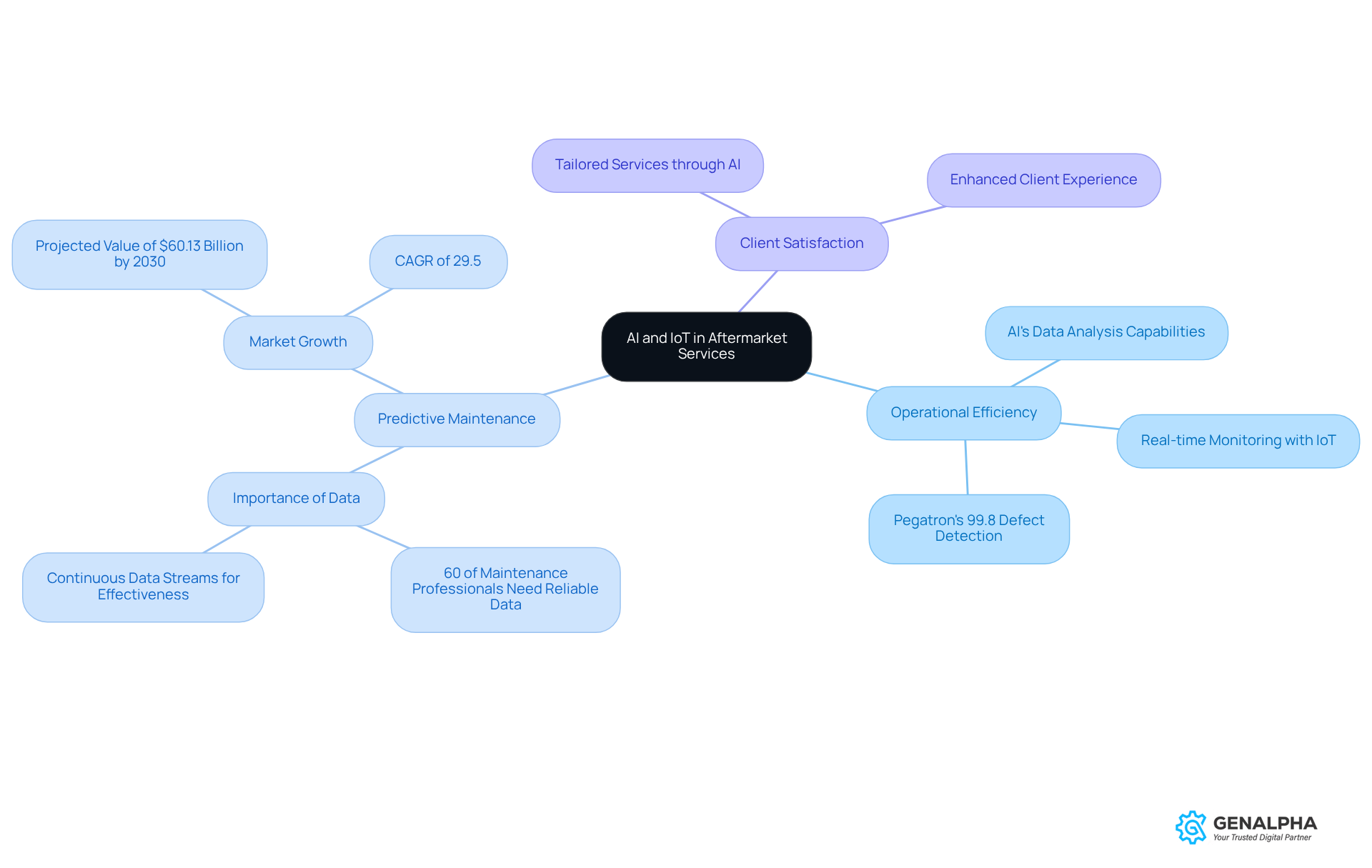
BCG: Drive Growth with Digital Services in Aftermarket Strategies
Have you ever thought about how digital offerings can truly drive growth in aftermarket services strategies? The Boston Consulting Group (BCG) emphasizes that businesses investing in digital capabilities can significantly enhance their interactions with clients, streamline delivery processes, and even create new revenue streams. By tapping into data analytics and consumer insights, companies can tailor their offerings to meet specific client needs, which leads to greater satisfaction and loyalty.
This is not just a trend; it’s a smart move that positions companies to seize new market opportunities and stay ahead of the competition. However, it’s worth noting that about 70% of digital transformation initiatives don’t hit their targets, which underscores the risks involved in these strategies.
Looking ahead, the digital transformation market is set to skyrocket from $911.2 billion in 2024 to a whopping $3.28 trillion by 2030. So, it’s crucial for companies to dig into their client data, pinpoint specific needs, and roll out effective digital strategies. What steps are you taking to ensure your business is ready for this digital wave?
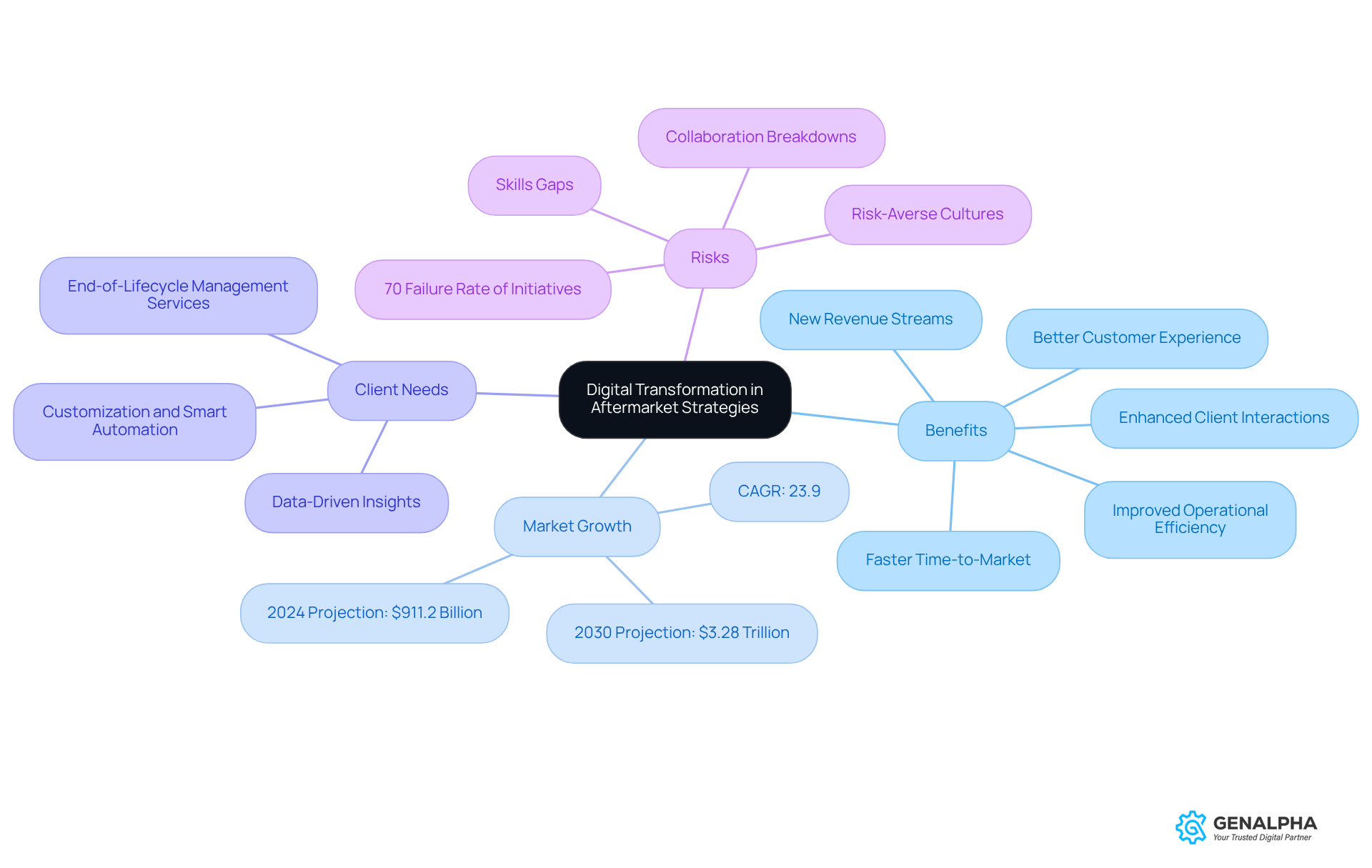
McKinsey: Meet New Customer Expectations in Aftermarket Services
Have you noticed how quickly client expectations in post-sale assistance are changing? Nowadays, customers are looking for higher quality, faster assistance, and more personalized experiences. To keep up, companies really need to invest time in understanding what their clients want and need. This means diving into data analytics to gain insights into customer behavior and preferences, allowing businesses to tailor their offerings just right.
Interestingly, a whopping 80% of participants are willing to spend more for solutions that reduce the total cost of ownership (TCO) of assets over time. This really underscores the . Plus, with fewer than 30% of executives currently tapping into suppliers' digital offerings, there’s a huge opportunity for companies to step up their data analytics game.
As Jorge Izquierdo, vice president of market development at PMMI, puts it, 'The data is clear: Aftermarket services are now critical to business success, rather than secondary.' By putting customer-focused strategies at the forefront and addressing challenges like low-quality talent and slow repair turnaround times, companies can enhance their post-sale services. This not only improves client satisfaction but also helps build lasting relationships.
So, what steps will you take to elevate your post-sale support?
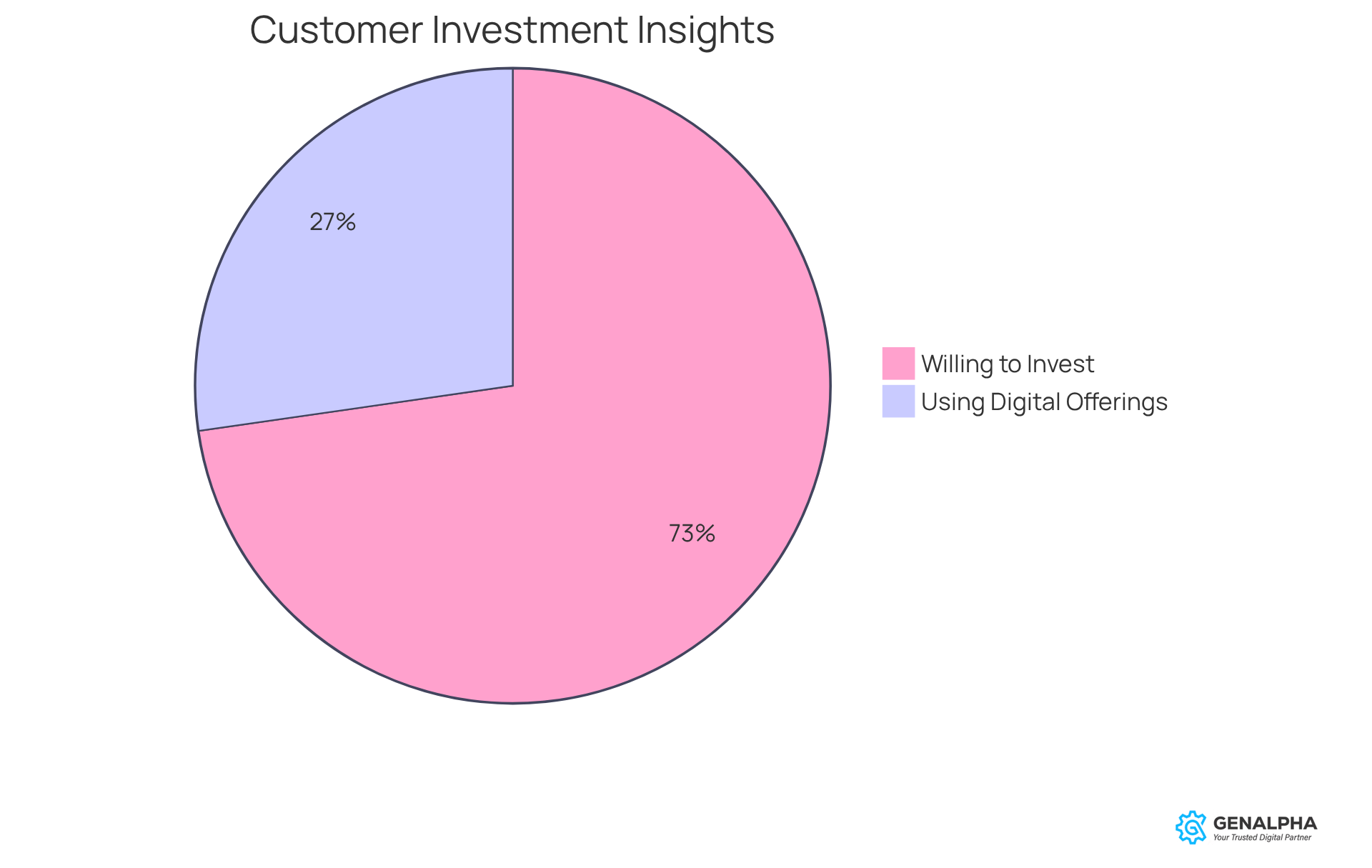
Hindsite Industries: Craft a Winning Aftermarket Customer Experience
At Hindsite Industries, we really get how crucial effective communication is for creating an outstanding client experience in the aftermarket sector. Have you ever thought about how understanding and addressing client pain points can make all the difference? It's essential for businesses to ensure smooth interactions at every touchpoint, from those first inquiries all the way through to post-sale support. By investing in client service training and utilizing advanced technologies, we can streamline processes, making it easier for clients to access timely and accurate information.
For example, did you know that 90% of clients stress the importance of quick responses to support inquiries? This really highlights the need for proactive engagement. Plus, companies that focus on personalized communication see a significant boost in client loyalty. Research shows that individuals who rate their interactions a perfect 10 are six times more likely to make another purchase.
And here's something interesting: companies that prioritize employee experience report a 1.8x greater revenue growth rate, showcasing the link between employee engagement and client satisfaction. By adopting strategies like effective onboarding processes—where clients who receive proper onboarding are 92% more likely to renew their subscriptions—we can enhance satisfaction and build long-term loyalty, ultimately driving growth in a competitive market.
As Chandra Shekhar wisely points out, 'Transparent communication has become a cornerstone of excellent aftersales customer support.' So, how can we put these insights into action? It’s simple—businesses should regularly evaluate their communication strategies and invest in training that emphasizes the importance of timely and personalized interactions. What steps can you take today to ?
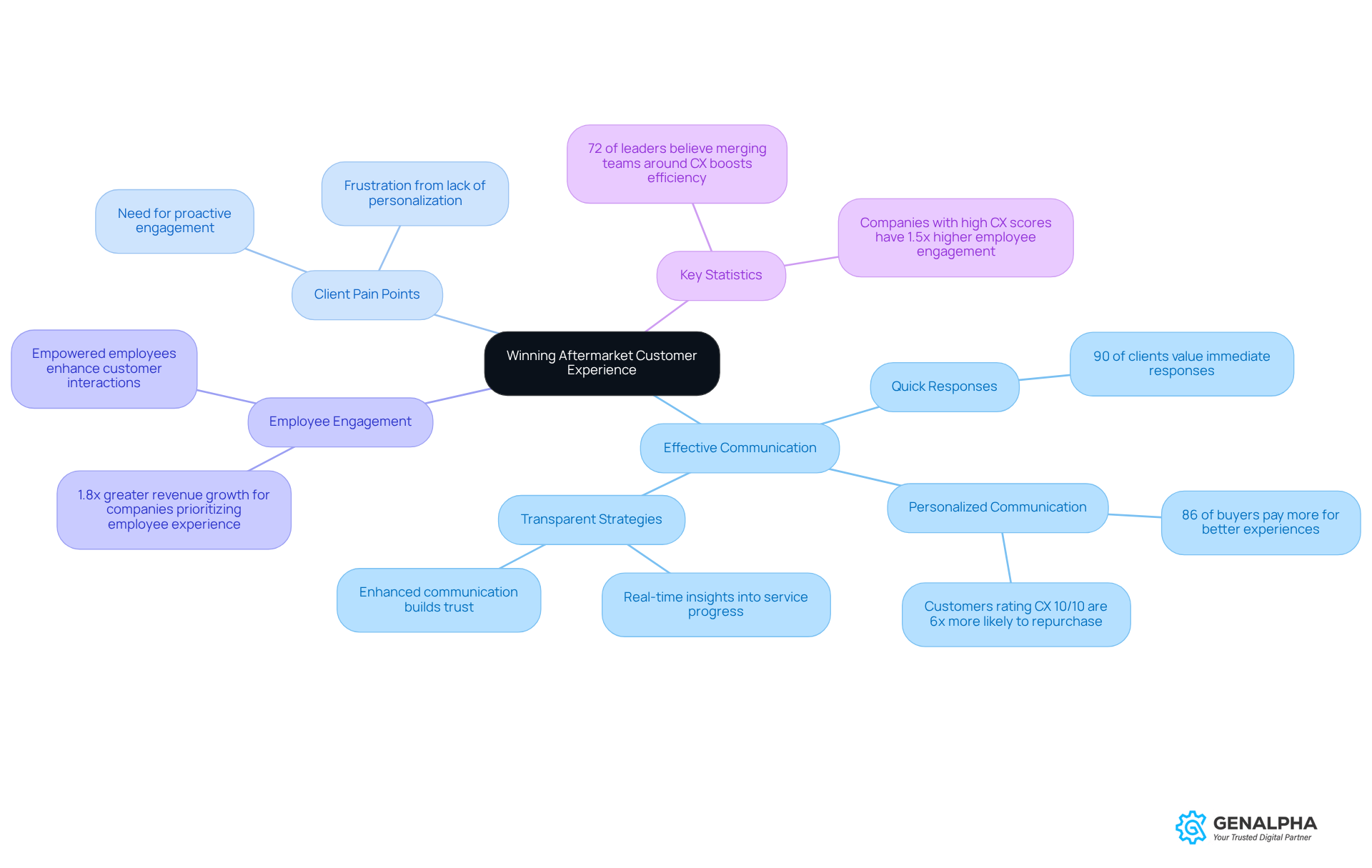
Forbes: Implement Connected Aftermarket Solutions for Smarter Services
Connected aftermarket services are shaking things up in the equipment sector, and it’s pretty exciting! By tapping into IoT and data analytics, companies are crafting a more seamless experience that boosts operational efficiency. Imagine being able to keep an eye on equipment performance in real-time—this means businesses can predict maintenance needs and tackle client issues before they escalate. For instance, IoT applications can track usage patterns and alert support teams before equipment failures occur, which cuts down on downtime and optimizes resource allocation.
But wait, there’s more! The benefits of these innovations go beyond just numbers; they also enhance customer satisfaction. When services are timely and relevant, it strengthens the bond with clients, making them feel valued and understood. As the secondary market evolves, embracing these connected solutions and incorporating aftermarket services is essential for producers and suppliers who want to stay competitive and responsive to market demands. Did you know that the automotive aftermarket is expected to grow from $430.51 billion in 2024 to $568.19 billion by 2032? This really underscores the importance of adopting these technologies.
And let’s not forget about the DIY sector, which is seeing rapid revenue growth! This highlights the need for tailored to meet specific market demands, ultimately enhancing user satisfaction. As Jean-Louis Rassineux, Deloitte’s Global Industrial Products & Construction Sector Leader, puts it, "Digital technologies such as IoT, sensors, machine learning, and GenAI have fueled the proliferation of smart operations in manufacturing and continue to drive gains in productivity and efficiency." By leveraging data-driven insights, companies can not only streamline their operations but also elevate service quality, fostering loyalty and growth in this fast-paced environment. So, are you ready to embrace these changes?
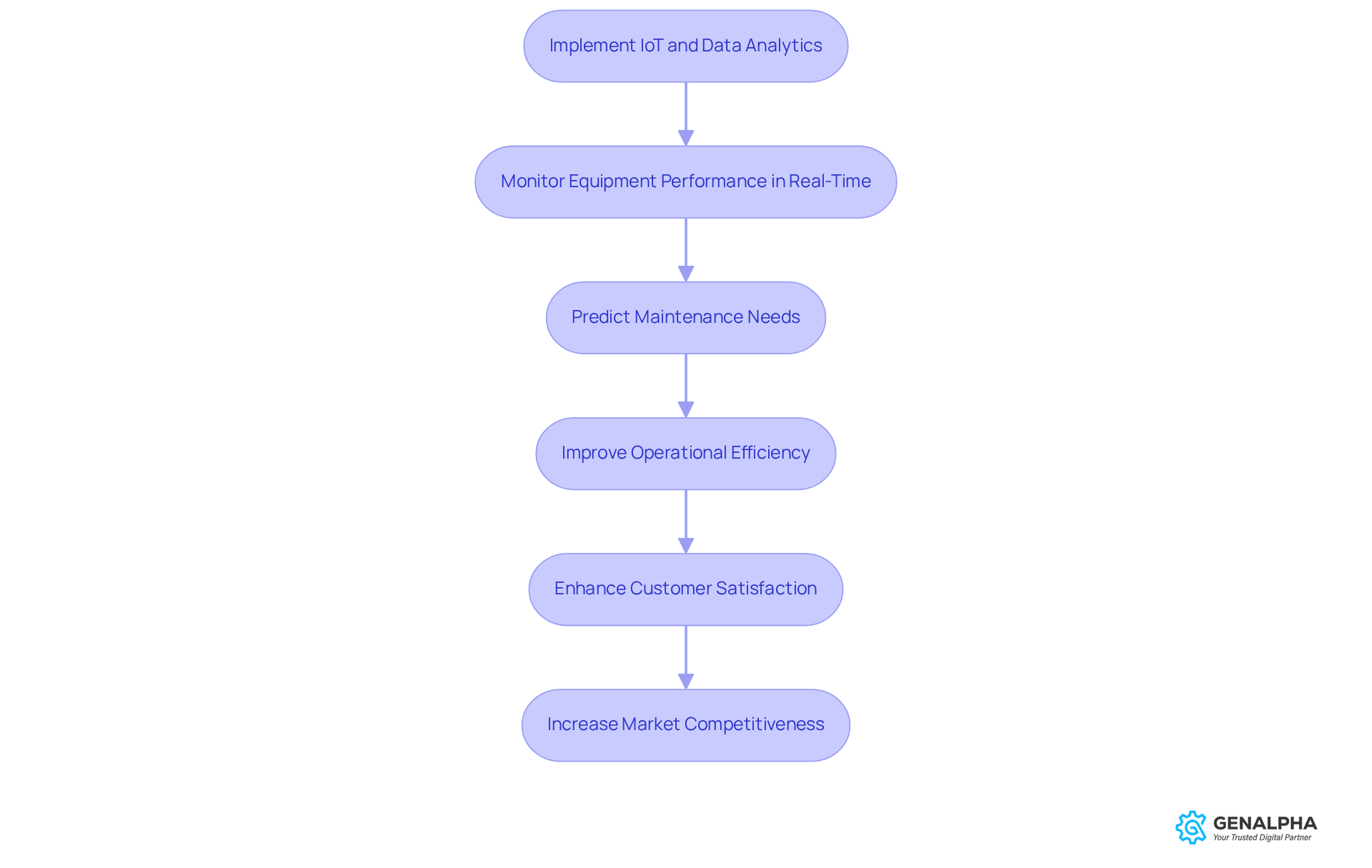
Collins Aerospace: Enhance Customer Support with 24/7 Response Solutions
At Collins Aerospace, we really get how crucial 24/7 client support is in the aftermarket. Imagine needing help at odd hours and knowing there's someone ready to assist you—that’s the kind of peace of mind we all appreciate! By providing aftermarket services with round-the-clock support, we not only enhance the client experience but also demonstrate our genuine care.
So, how can companies step up their game? It starts with investing in training for support staff and embracing technology solutions like chatbots and automated response systems. These tools can make a world of difference in providing timely assistance.
When we , we’re not just solving problems; we’re building trust and loyalty. And let’s be honest—who doesn’t want to drive repeat business and earn positive referrals? It’s all about creating a supportive environment where clients feel valued and heard. So, what steps are you taking to enhance your client support today?
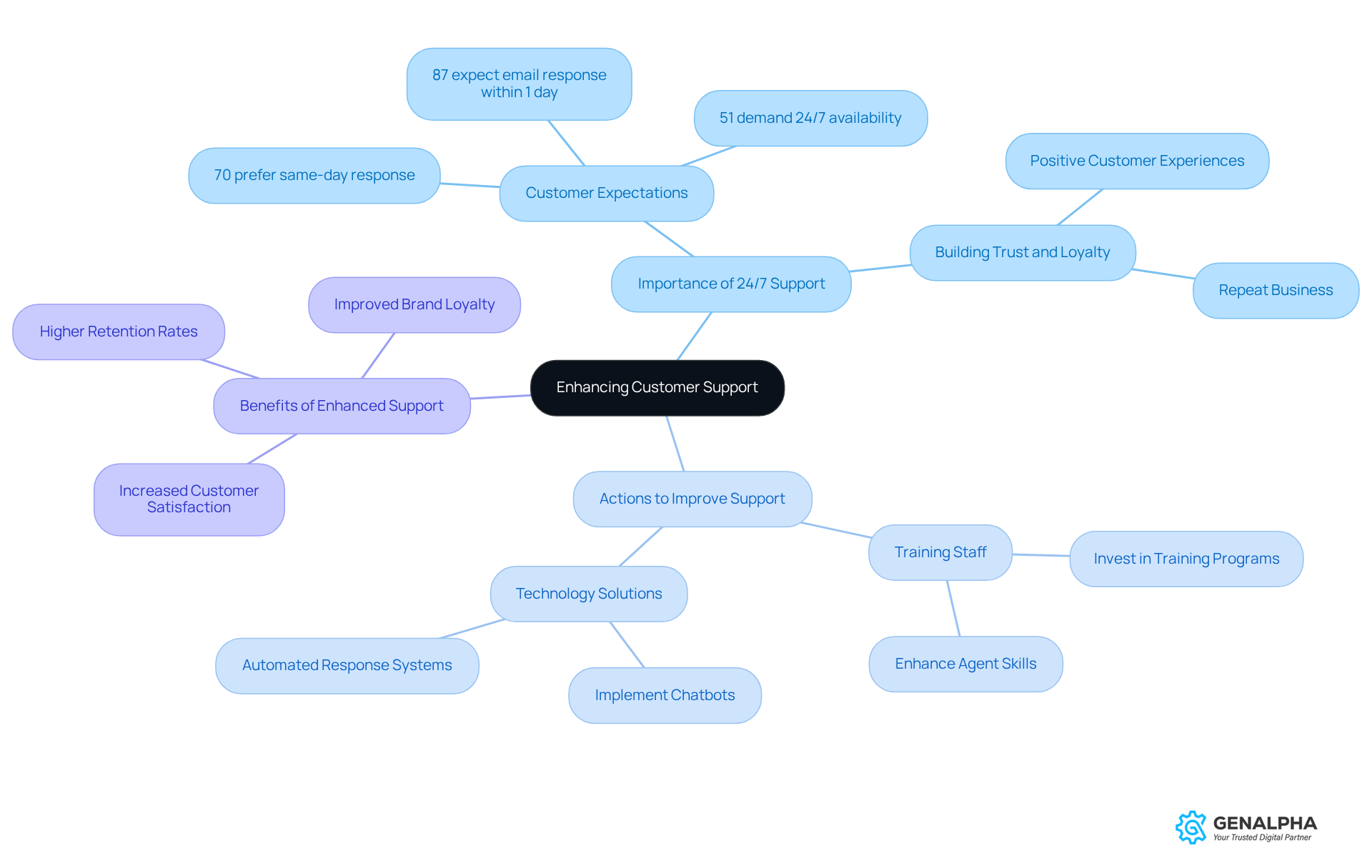
ResearchGate: Explore Best Practices in After-Sales Services
Have you ever wondered how to make after-sales support truly shine? ResearchGate offers some great insights into best practices that can really make a difference! First off, keeping open channels of communication with clients is key. Imagine how much smoother things go when you’re delivering prompt updates on inquiries. Plus, ensuring that your support team is well-trained and informed can really elevate the experience.
But wait, there’s more! Companies should also take the time to routinely seek input from clients. This feedback is gold when it comes to identifying areas for enhancement. By adopting these best practices, businesses not only enhance their aftermarket services but also cultivate stronger relationships with their clients. So, why not start implementing these strategies today? Your clients will !
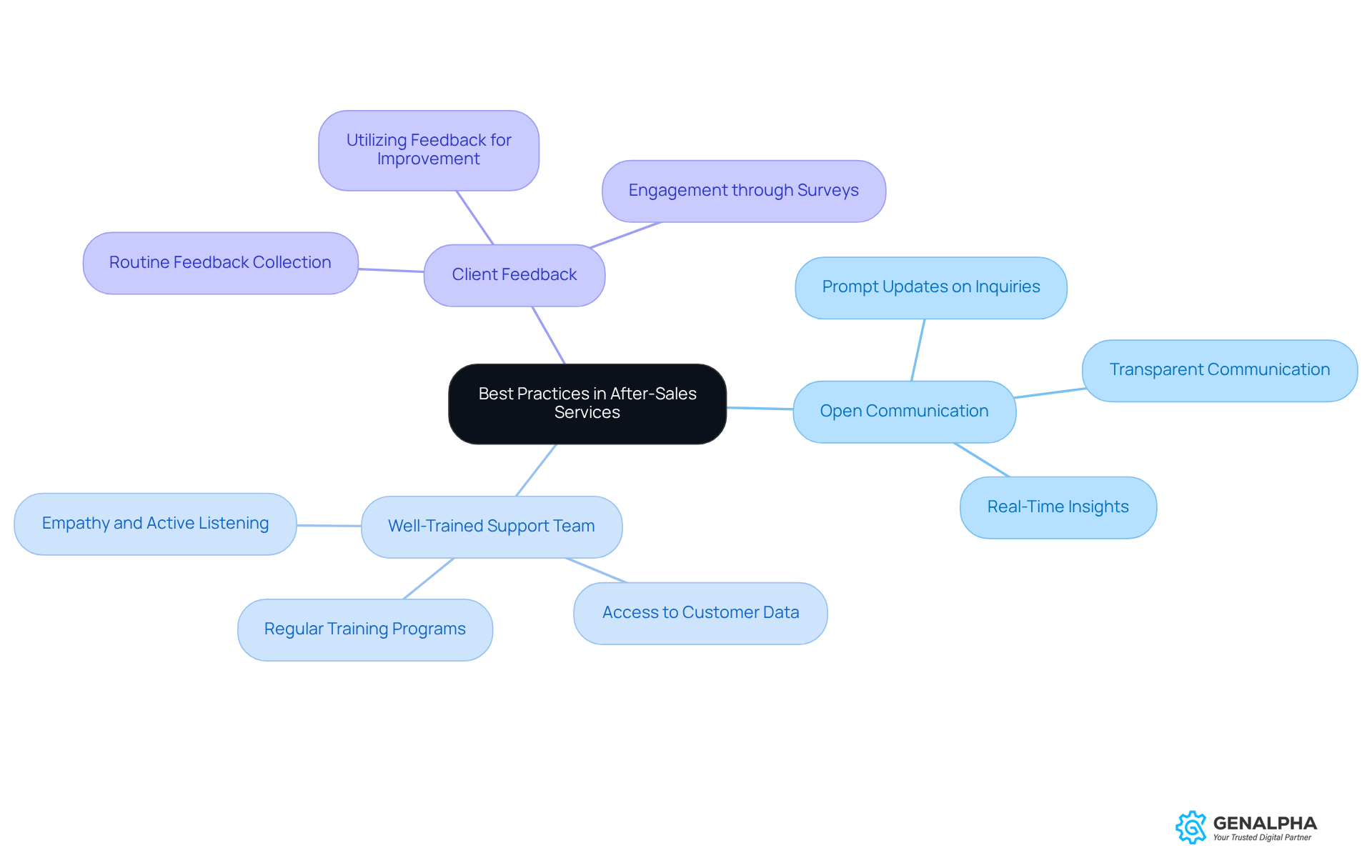
CDS Visual: Elevate OEM Aftermarket Services with Customer Experience Focus
Enhancing OEM aftermarket services really hinges on one key factor: client satisfaction. Have you ever thought about how understanding customer needs and preferences can transform your offerings? It’s all about creating connections. Companies can tap into technology to deliver personalized experiences, like customized service offerings and proactive communication strategies. For instance, did you know that 60 percent of consumers are likely to become repeat buyers after a tailored interaction? That’s a big deal when it comes to nurturing loyalty!
And here’s something to think about: clients who rate their satisfaction a perfect 10/10 tend to spend 140% more and remain loyal up to six times longer. That’s not just a statistic; it’s a clear indicator of the . Plus, businesses that prioritize client satisfaction are 29 percent more likely to secure additional funding for customer experience initiatives. This really underscores the financial advantages of investing in strategies that put clients first.
In today’s competitive landscape, OEMs that stand out by delivering exceptional client experiences through aftermarket services not only foster loyalty but also pave the way for ongoing growth and profitability. So, what steps can you take to enhance your client offerings today?
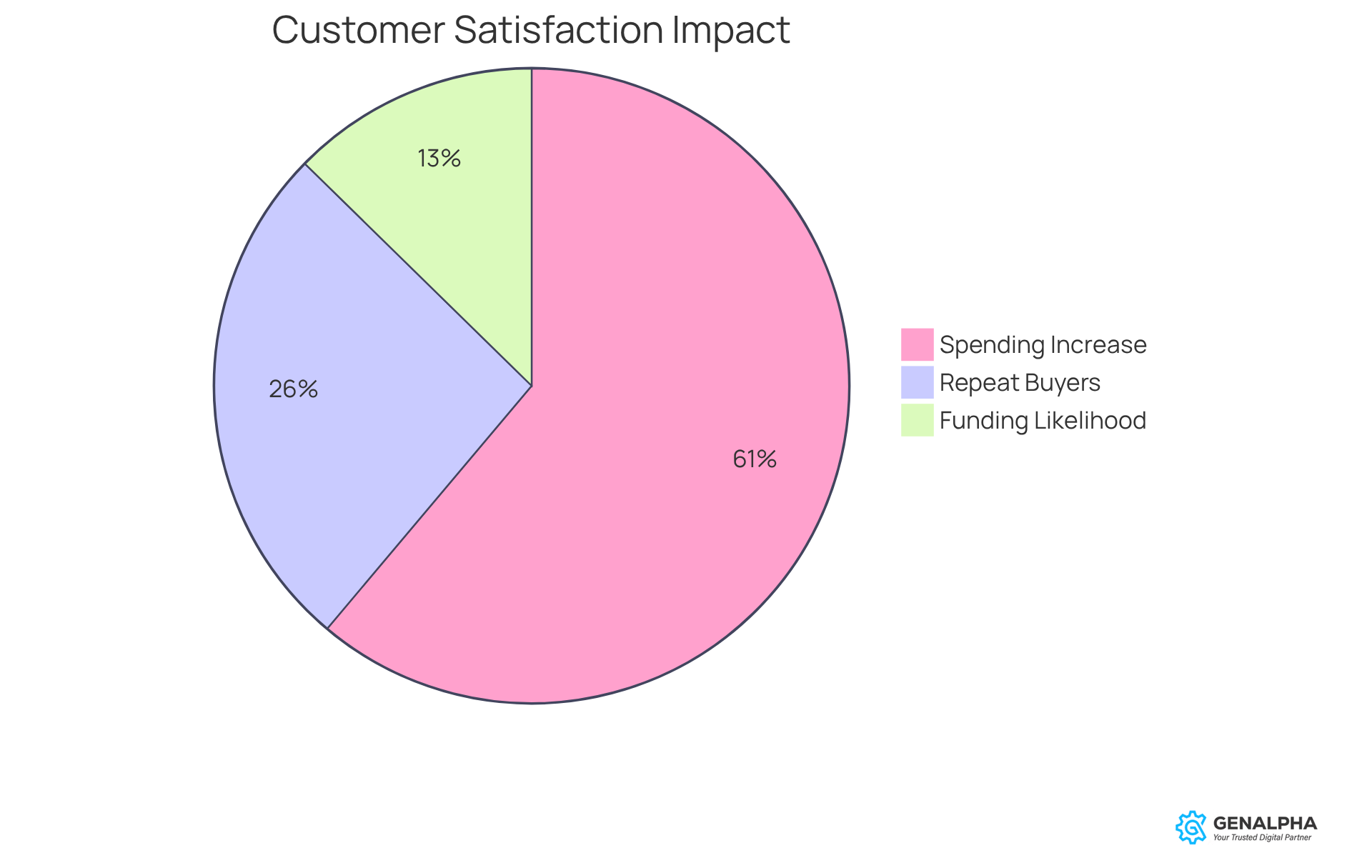
Umbrex: Navigate the Automotive Aftermarket Landscape Effectively
To really thrive in the , companies need to keep their eyes peeled for shifting industry trends, customer preferences, and competitive dynamics. Did you know that 46% of consumers kick off their follow-up research on Google? This highlights just how crucial it is to have a strong online presence. And here’s something interesting: Facebook actually generates four times more leads than Instagram when it comes to parts discovery. This shows how different platforms play unique roles in secondary market research.
Now, let’s talk about the power of data analytics. By leveraging these tools, businesses can gain deeper insights into consumer behavior and fine-tune their offerings. For instance, the U.S. automotive secondary market saw a growth of 5.7% in 2024! This indicates a robust growth potential, especially as the average age of light trucks hits 11.9 years and passenger cars average 14 years.
So, what does this mean for companies? Those that adapt to these trends and tap into insights from market research are in a prime position to seize emerging opportunities and enhance their services in the aftermarket. To keep the momentum going, it’s essential for companies to regularly revisit their market research strategies and consider using advanced analytics tools to stay ahead of the competition. Are you ready to take action and embrace these insights?
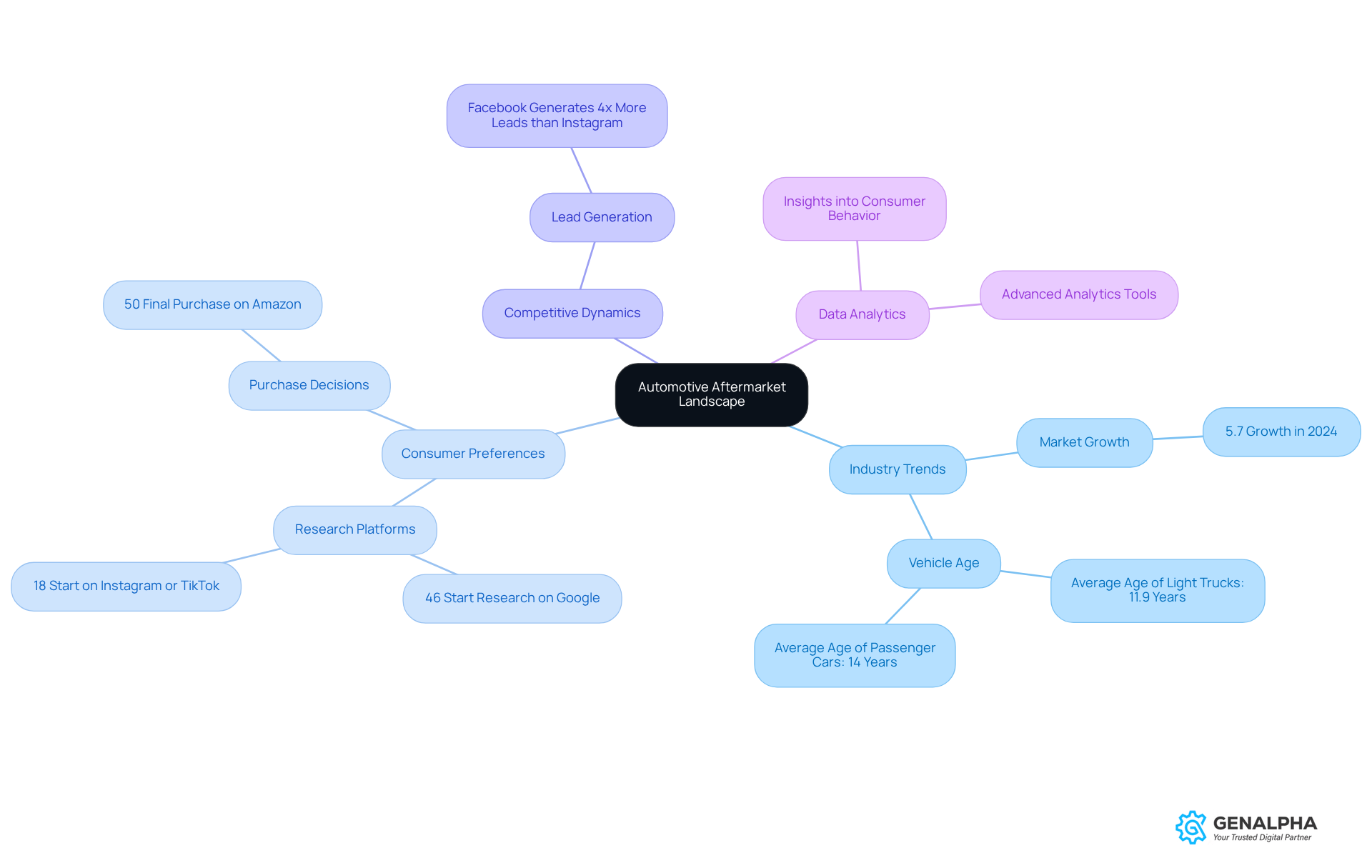
Conclusion
As we navigate the fast-paced world of aftermarket services, it’s clear that implementing effective strategies is key for businesses looking to elevate client experiences and boost operational efficiency. Let’s explore some innovative approaches, from harnessing technology like Equip360 to tapping into the power of AI and IoT—all aimed at meeting the rising expectations of customers in 2025 and beyond.
Think about how real-time inventory management, predictive maintenance, and personalized customer interactions can transform your business. Equip360 is a game-changer for streamlining operations, while AI and IoT technologies help us anticipate client needs and enhance service delivery. Plus, focusing on digital transformation and connected solutions shows how we can drive growth and stay ahead in the aftermarket sector.
At the heart of it all is customer satisfaction—it truly can’t be overstated. By prioritizing effective communication, timely support, and tailored experiences, we not only build loyalty but also unlock new revenue streams. As the aftermarket landscape keeps evolving, taking proactive steps to implement these strategies is crucial for long-term success. So, why not embrace these insights today? Together, we can pave the way for a more resilient and customer-centric future in aftermarket services.
Frequently Asked Questions
What is Equip360 and how does it improve aftermarket operations?
Equip360 is a B2B eCommerce platform designed for manufacturers and distributors in the equipment and aftermarket services sectors. It streamlines inventory management, enhances online sales capabilities, and improves client experiences by providing real-time insights into inventory levels, pricing, and order tracking.
How does Equip360 address common challenges faced by B2B eCommerce businesses?
Equip360 tackles significant challenges such as missing stock information and order fulfillment difficulties. By providing real-time inventory insights and efficient order tracking, it helps businesses adapt quickly to client needs and market changes.
What is the projected growth of the global B2B e-commerce market?
The global B2B e-commerce market is projected to grow from $26.16 trillion in 2023 to $56.92 trillion by 2028.
How are AI and IoT transforming aftermarket services?
AI and IoT are enhancing operational efficiency in aftermarket services by enabling predictive maintenance, providing real-time monitoring of equipment performance, and allowing businesses to tailor services based on client needs.
What is predictive maintenance and why is it important?
Predictive maintenance involves using data to anticipate equipment needs and prevent downtime. It is important because it can significantly reduce equipment downtime and save costs, with the global value of predictive maintenance expected to reach $60.13 billion by 2030.
What role does digital transformation play in aftermarket strategies?
Digital transformation enhances client interactions, streamlines delivery processes, and creates new revenue streams. Companies that invest in digital capabilities can better meet client needs, resulting in greater satisfaction and loyalty.
What challenges do companies face with digital transformation initiatives?
Approximately 70% of digital transformation initiatives do not meet their targets, indicating the risks associated with implementing these strategies.
What is the expected growth of the digital transformation market?
The digital transformation market is anticipated to grow from $911.2 billion in 2024 to $3.28 trillion by 2030.




